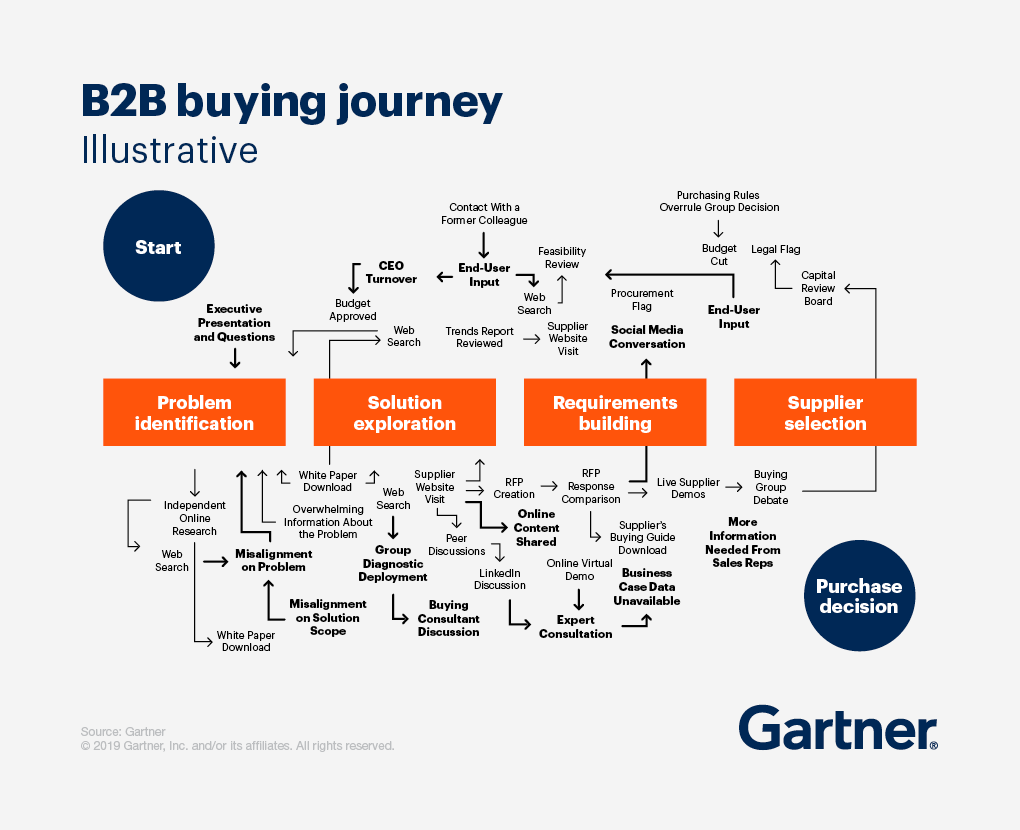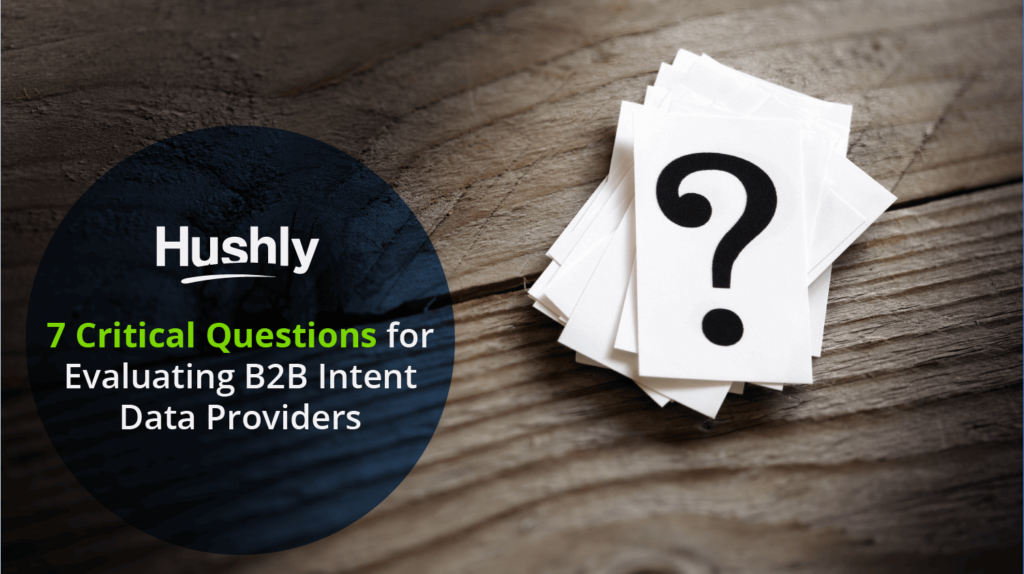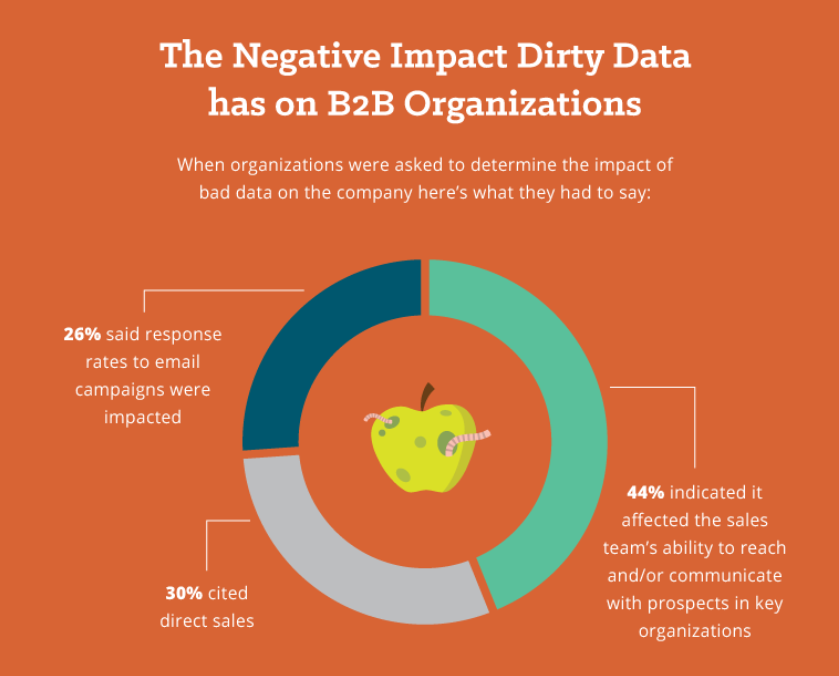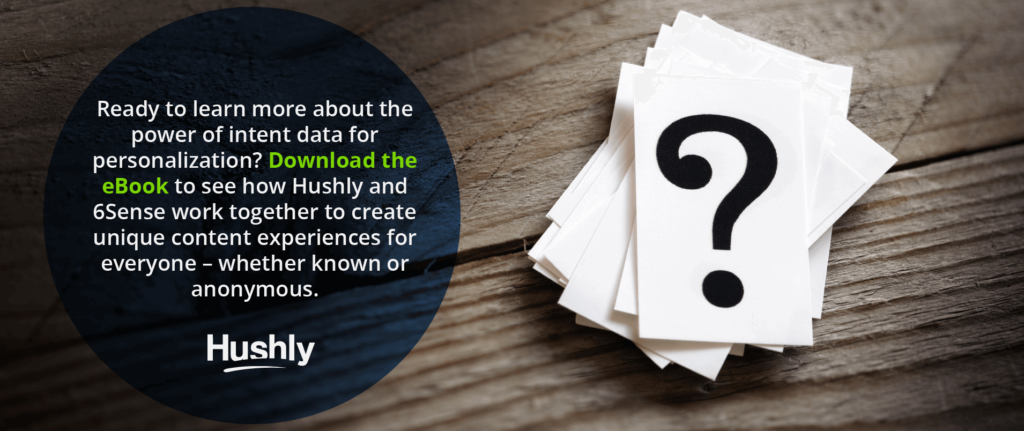Technology can’t predict the future quite yet, but we get closer every day.
Tools like predictive analytics, machine learning, and intent data can help you piece together the buyer’s journey.
The buyer’s journey isn’t at all linear.

How can you possibly understand where a lead is at any point in time? Intent data uses first- and third-party sources to understand why someone is visiting your website.
You can expect intent data to explode next year as Chrome and other browsers phase out third-party cookies.
But like other types of data, intent data isn’t all created equal. Some B2B intent data providers source information from questionable sources, putting you at risk for privacy violations or bad intel.

Why is Choosing the Right B2B Intent Data Provider So Important?
Intent data is empowering when it’s accurate and follows privacy laws.
When you know a visitor’s intent behind interacting with your website or product, you can use that information for things like:
- Building an account-based marketing strategy
- Personalizing your website content experience
- Preventing churn from existing customers
- Improved lead scoring and nurturing
- Highly targeted social media ads
If your provider gives you bad data, this could throw off your entire marketing strategy – setting you back in both lost money and qualified leads. Over a third of all B2Bs say leveraging data is their biggest hurdle towards improving the customer experience. The last thing you need is more bad data in the mix.
Choosing a provider requires a lot of trust. Most B2B intent data providers won’t want to give up their trade secrets to anyone who asks. That’s reasonable, but it also creates the perfect environment for scams and exploitation.
As intent data grows in popularity, expect to see more shady businesses getting into the game.
How to Choose the Right B2B Intent Data Providers: 7 Things to Look For
It’s crucial to nail down how you’ll use B2B intent data in your marketing strategy so you can ask the right questions.
1. Where Do They Get Their B2B Intent Data?
Some B2B intent data providers might only give you the information they’ve collected from their own websites.
Meanwhile, others might only partner with a handful of B2B blogging websites. Any reputable provider should at least tell you a handful of sources to back up their claims.
Don’t forget to investigate these sources individually too.
2. How Do They Verify the Accuracy of Their Buyer Intent Data?
Collecting data is one thing. Making sure it’s accurate is a whole different story.
62% of businesses rely on data up to 40% wrong to drive their marketing decisions. Not only does bad data contribute to 40% of failed objectives, but it also costs you money to get rid of.
Once bad data enters your system, it takes $10 to scrub later and $100 if you do nothing.

Ask B2B intent data providers how they verify their data is correct. Do they cross-reference it with public data on LinkedIn? Do they filter out free email domains? Do you have to pay up even if the leads aren’t genuine?
Hushly, for example, uses public information and business emails to verify every lead. We also never require payment to use our platform – you only pay a flat rate for each genuine lead.
3. Which Intent Signals Do They Track?
You might be surprised to learn what some brands consider B2B intent data. Some providers might only track one or two signals. That doesn’t give you a comprehensive picture of intent, necessarily.
Ideally, a B2B intent data provider should compile a nice profile from signals like:
- Lead magnet downloads like eBooks and case studies
- Event RSVPs
- Display advert clicks
- Search engine keywords
- Social mentions and engagement
- On-site and off-site website visits
4. How Do They Collect Their B2B Intent Data?
Asking how a B2B intent data provider collects their information can help you weed out discrepancies.
It’s easy to say “we get our data from xyz” when you ask where it comes from. Asking how forces the provider to describe the process a little bit.
Do they scrape keywords? Research publishers? Monitor mouse behavior?
Is it bidstream data, or does it come from a co-operative of publishers?
Are they collecting cookie data? If so, what’s their plan for when Google and Apple move away from cookies next year?
They should also be able to tell you how they judge which signals are strongest and worth collecting.
5. Does Their Buyer Intent Data Abide by Privacy Laws?
This is a big one because there’s a lot of gray areas in data collection right now.
First-party intent data is much easier to track, but third-party data can get a little controversial.
Your B2B intent data provider should clearly state on their site that they’re complying with GDPR guidelines. In many cases, intent data is anonymous and tracked by session or account – not necessarily tied to individual names.
6. How Old is Their B2B Intent Data?
Everyone knows how quickly data becomes outdated. People change roles and jobs all the time.
Every year, over a third of all job titles, email addresses, and company names will change.
If you pay for intent data, you should expect it to be up to date. Outdated data means you’ll never be targeting leads at the right stage of the sales funnel.
Providers know bad data is a huge problem across B2B, so they should be willing to explain how they keep their data clean.
7. How Can You Integrate Their Buyer Intent Data with Your Martech Stack?
Raw data won’t do you any good. You need current and comprehensive buyer intent data that seamlessly integrates with your current marketing tools.
Hushly, for example, puts intent data to work instantly when you launch the platform because we’ve partnered with 6Sense.
The point of intent data is to save you time and energy – not make your job harder.
Use B2B Intent Data and AI to Power Your Website Personalization
We’ve partnered with 6Sense to help you harness the power of clean intent data for your B2B website.
6Sense uncovers signals across the B2B web and matches them to key accounts. When those accounts visit your website and interact with Hushly, they get a personalized experience based on intent data.
Ready to learn more about the power of intent data for personalization? Download the eBook to see how Hushly and 6Sense work together to create unique content experiences for everyone – whether known or anonymous.


